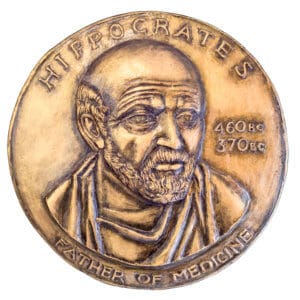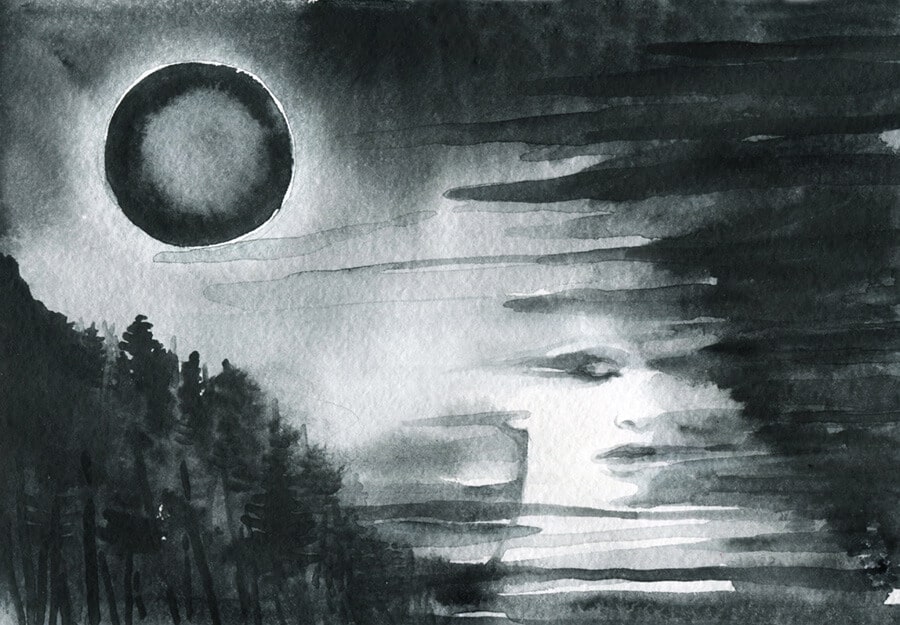Melancholy has been treated differently and with several meanings throughout the years. Even throughout centuries. Opinions of authors and psychologists have been divided, even until recently, on what melancholia consists of and how it differs from depression. So, what do we know of it so far?
In modern medicine, the parallel feeling of melancholia, consisting of anguish and despair and often considered as the most expanded form of ‘illness’ is depression. Lucky for us, we can now work on diminishing these bad feelings and thoughts by consulting with a good therapist.
We have plenty of sources to let us know why we are feeling blue, and where is this blueness coming from. But back in the days, this was not the case at all.
What was Melancholia?

The first known use of the melancholia condition came from the Greeks, in 400 BC. More specifically, it was the Greek philosopher Hippocrates who concluded that that the human body was compound of four main fluids: blood, black bile, yellow bile, and phlegm.
According to him, humans could become sick whenever these fluids within their bodies were out of balance. In our context, an excess of black bile would cause someone to become despondent and fearful. And this excess ‘black mood’ was what the Greeks called melancholia. This was the first term used to describe what we know call depression, and the first study that was conducted to understand it.
A research study from Ira Glovinsky emphasizes that melancholia in early medical writings had a wider range of disorders than the one known on the twentieth-century, including dejected stated, subdued behavior, insomnia, delusions, discouragement and fear.
In the 2nd Century AD, Rufus of Ephesus and Galan described persons who suffered from melancholia as sad, gloomy, and fearful, with delusional ideas involving guilt and sin.
Galan’s restatement of Hippocrates’ description of melancholia as consisting of affective feelings, self-depreciating cognitions, and somatic symptoms prevailed for the next 1,500 years. Galen (129–216 AD) pursued to study Hippocrates theory of temperaments, persisting that there are four types of temperament which result from humoral excesses:
- Melancholic (black bile)
- Optimistic (blood)
- Choleric (yellow bile)
- Phlegmatic (‘phlegm’)

Galen believed that except the fact that his patients showed depressive symptoms such as fear and despondency, they also showed bizarre and fixed ideas. This rings a bell to what nowadays we know as ‘a delusional state of being’.
Historic Definitions
During the 17th and 18th centuries, there were occasional references in English to the term depression, which came from the Latin, deprimere, to press down (Stanley W Jackson, Melancholia and Depression, 1995). In the 19th Century, Pinel and Greisinger considered depression to be synonymous with melancholia, which Pinel defined as “characterized by great depression of spirits” that involved gloom, despair, and suspicion (Jackson 1995). Generally speaking, at the time ‘melancholia’ referred to a wide range of medical disorders, including epilepsy and apoplexy.
“If fear or sorrow lasts for a long time, it is a melancholic state” – Hippocrates
Other authors that managed to conduct greater study on Melancholy are certainly Brighten and Burton. On his book, Treatise of Melancholy, T. Bright concludes that hic melancholic patients “are for the most part sad and fearful, and such as rise of them: as distrust, doubt, diffidence, or despair”.
This book is later known to have become an inspiration of the most extended treatment of melancholia which comes from Robert Burton, whose book, The Anatomy of Melancholy (1621), treats the subject from both a literary and a medical perspective.
His concept of melancholia includes all mental illness, which he divides into different types. Burton wrote in the 17th Century that music and dance were critical in treating mental illness.
During the Renaissance a new melancholic trend arose, with Europeans tending to believe that melancholia was a sign of creative genius. They glorified it through art, fashion, and written works.
“Small wonder that eventually the attitudes of melancholy soon became an indispensable adjunct to all those with artistic or intellectual pretentions.” – Roy Strong, “Apollo” 1964
However, by the 18th Century, the term returned to its clinical meaning.
Modern understandings of Melancholia

As Goodtherapy states it: nowadays melancholia is no longer listed as a standalone mental health issue. Instead, the Diagnostic and Statistical Manual (DSM) lists it as a specifier for depressive disorders. Rather than receiving a diagnosis for melancholia, a person is more likely to receive a diagnosis of major depression (MDD) with melancholic features.
Although it may be thought that melancholia and depression are the same, turns out that they’re only submerged in the same category. These are some of the differences by Susmu Ohmae’s article:
“Depression is a deepened or prolonged sadness in everyday life, but melancholia has a distinct quality of mood that cannot be interpreted as severe depression. In modern times, depression has been treated with a diverse range of methods, including rest, talk therapy, amphetamines (1930s), meprobamate (1950s), and benzodiazepines (1970s).
“Melancholia has primarily been treated with somatic therapy, such as electroconvulsive therapy, and tricyclic antidepressants.”
Today, you will find melancholia covered under the term of Melancholic depression, as a form of major depressive disorder (MDD).
Healthline underlines the significant and serious symptoms of MDD, recognising it as a “mental health condition characterized by persistent and intense feelings of sadness and hopelessness”.
It is stated that such disorder can manage to affect many areas of life, including work, school, and relationships whereas it may also impact mood and behavior along with various physical functions, such as appetite and sleep.
“People with MDD often lose interest in activities they once enjoyed and have trouble getting through the day. Occasionally, they may also feel as if life isn’t worth living”.
Melancholia, or as its known now, melancholic depression is believed to be rather an internal feeling of sadness. As the times have changes, we can now seek for a personalised way of therapy, rather than being diagnosed as hysteric and being shut down, like they used to do with people suffering from this condition back in the days, especially towards women.
On one of my previous articles, I have written about School of Life’s amazing videos. Wanting to contextualise this with the topic on Melancholia, I would totally suggest all readers to go check out School of Life’s video: On Feeling Melancholy. The way they managed to define it is absolutely sublime.
Photos: Shutterstock
Want to check out the School of Life article? Here you go:
Support us!
All your donations will be used to pay the magazine’s journalists and to support the ongoing costs of maintaining the site.
Share this post
Interested in co-operating with us?
We are open to co-operation from writers and businesses alike. You can reach us on our email at [email protected]/[email protected] and we will get back to you as quick as we can.









